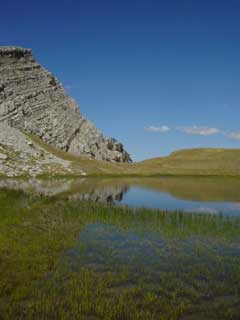 Great Examples Of ‘Hima’ Or Protected Areas In The Middle East
Great Examples Of ‘Hima’ Or Protected Areas In The Middle East
Now that Green Prophet has looked into the tradition of ‘Hima’ or environmental preservation in the Middle East, this post will explore some of the most famous examples of Hima and how they helped create sustainable societies.Now that Green Prophet has looked into the tradition of ‘Hima’ or environmental preservation in the Middle East, this post will explore some of the most famous examples of Hima and how they helped create sustainable societies.
As the birthplace of the Hima, the Arabian Peninsula is home to some of the most noted examples of Himas. The two most widely recognised examples are those established by the Prophet Muhammed [pbuh] in Mecca and Medina within Saudi Arabia. These were based on the meaning of Hima under Islamic law, which required that they be declared for the good of the wider community and not for the benefit of private individuals.
The Prophet Muhammed [pbuh] established the Hima of an-Naqi’ to the south of Medina and one surrounding Medina for very different reasons. The Hima around Medina was specifically preserved for the cavalry as the camels were allocated for charity and the livestock to serve the poor. The second around Medina more or less fits into the traditional model of conservation work and was based on a zoning principle.
Hunting was forbidden within a four mile radius and the destruction of trees or plants forbidden within a twelve mile radius. As well as conserving nature, Himas also protected the agricultural community from overexploitation by nomadic herders and allowed regeneration to occur to encourage resilience and sustainability.
Important Role of The Local Community
The practise of Hima continued to exist throughout the Middle Ages, varying in size from a few hectares to hundreds of square kilometres. According to a report titled ‘Hima: A Way of Life’ by the International Union for the Conservation of Nature: “Traditional himas made up a vast area of land under conservation and sustainable use, and on the whole, they became the best-managed rangelands in the Arabian Peninsula.”
Himas are traditionally ruled by the local communities through consensus and different groups held specific responsibilities such as collecting rainwater run-off and monitoring grazing. This is one of the main strengths of Hima- “it provides an incentive for local communities to invest in the maintenance of their natural resources and to protect them from abuse.”
Punishment for violating Hima under Islamic law included the slaughtering one or more of the trespassing animals to feed members of the local community as well as confiscation of livestock, the trespassers gear and even their clothes! More recently, however, the punishments tend to take the form of fines and imprisonment in the case of repeated offences.
As the birthplace of the Hima, the Arabian Peninsula is home to some of the most noted examples of Himas. The two most widely recognised examples are those established by the Prophet Muhammed [pbuh] in Mecca and Medina within Saudi Arabia. These were based on the meaning of Hima under Islamic law, which required that they be declared for the good of the wider community and not for the benefit of private individuals.
The Prophet Muhammed [pbuh] established the Hima of an-Naqi’ to the south of Medina and one surrounding Medina for very different reasons. The Hima around Medina was specifically preserved for the cavalry as the camels were allocated for charity and the livestock to serve the poor. The second around Medina more or less fits into the traditional model of conservation work and was based on a zoning principle.
Hunting was forbidden within a four mile radius and the destruction of trees or plants forbidden within a twelve mile radius. As well as conserving nature, Himas also protected the agricultural community from overexploitation by nomadic herders and allowed regeneration to occur to encourage resilience and sustainability.
Important Role of The Local Community
The practise of Hima continued to exist throughout the Middle Ages, varying in size from a few hectares to hundreds of square kilometres. According to a report titled ‘Hima: A Way of Life’ by the International Union for the Conservation of Nature: “Traditional himas made up a vast area of land under conservation and sustainable use, and on the whole, they became the best-managed rangelands in the Arabian Peninsula.”
Himas are traditionally ruled by the local communities through consensus and different groups held specific responsibilities such as collecting rainwater run-off and monitoring grazing. This is one of the main strengths of Hima- “it provides an incentive for local communities to invest in the maintenance of their natural resources and to protect them from abuse.”
Punishment for violating Hima under Islamic law included the slaughtering one or more of the trespassing animals to feed members of the local community as well as confiscation of livestock, the trespassers gear and even their clothes! More recently, however, the punishments tend to take the form of fines and imprisonment in the case of repeated offences.
| Contact information |
Arwa Aburawa
(email: arwa_mcr@greenprophet.com ; arwa@greenprophet.com) |
|---|---|
| News type | Inbrief |
| File link |
http://www.greenprophet.com/2010/09/examples-of-hima/ |
| Source of information | The Green Prophet |
| Subject(s) | NATURAL MEDIUM , PREVENTION AND NUISANCES POLLUTION , RISKS AND CLIMATOLOGY , TOURISM - SPORT - HOBBIES |
| Geographical coverage | n/a |
| News date | 20/10/2010 |
| Working language(s) | ENGLISH |
 you are not logged in
you are not logged in





